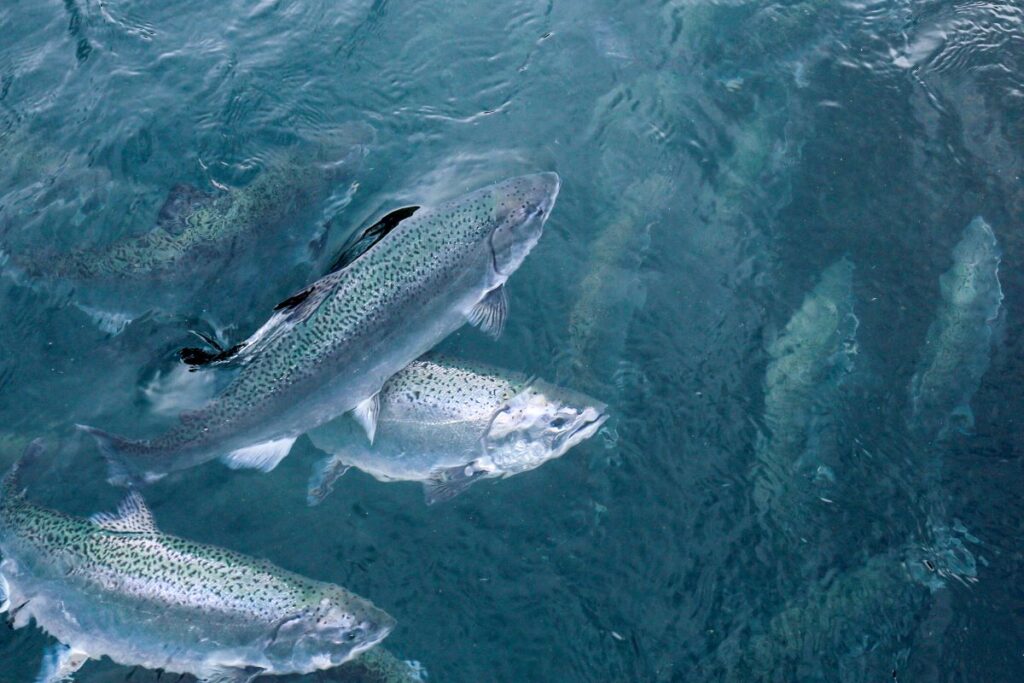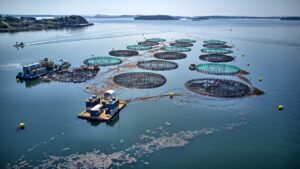Stark numbers

The latest report from the Norwegian Veterinary Institute indicates that the industry is still failing to get a grip on salmon and trout mortalities. Vince McDonagh reports
The figures are stark and speak for themselves – and should worry not just salmon farmers in Norway, but the industry internationally.
The Norwegian Veterinary Institute last month reported that 105.4 million salmon and trout at all stages of life died prematurely last year from disease, winter sores, jellyfish attacks and climate issues – the highest figure on record.
Norway is not alone with some of these problems. Iceland, Scotland, Chile and Canada have all experienced similar issues over the past year.
But Norway is the world leader among salmon farming countries and way out in front when it comes to aquaculture health technology. If it cannot solve some of the problems facing the industry, who else can?
The figures will also provide ammunition for the growing number of often uninformed commentators and organisations opposed to fish farming of any kind, ignoring that many of the deaths are down to climate issues, which are also affecting agriculture and life in general.
The mortality figures are divided into two sections. They show that 37.7 million salmon and 2.4 million rainbow trout over three grams died from hatchery production on land in 2023.
Secondly, 62.8 million salmon (16.7%) and 2.5 million rainbow trout (14%) in the marine phase of production.
For salmon in the sea phase, the mortality figures in 2023, both in number and percentages, are the highest recorded so far, says the Veterinary Institute.
The report says that overall, it is the same three health issues that stood out again last year:
• damage from lice treatments;
• complex gill disease; and
• winter sores.
Damage caused by jellyfish is now ranked among the 10 most serious health challenges, which the report says represents a significant change in 2023.
Among serious infectious diseases, in 2023, there was a worrying increase in detections of bacterial kidney disease (BKD) and also four cases of pancreatic disease (PD) north of the endemic PD zone.
The report points out that infectious diseases are an extensive problem both for the fish’s welfare and for survival in the sea.
Much is known about how the risk of infection can be reduced, but there is still room for improvement by translating knowledge into action, the Veterinary Institute says.
The five most common subcategories in infectious diseases were:
• winter sores;
• cardiomyopathy syndrome;
• gill disease;
• heart and skeletal muscle inflammation; and
• lice treatments and stressful handling, which can weaken the fish and make it more susceptible to infectious diseases.

Edgar Brun
A turbulent year
Launching the Norwegian Fish Health Report, Edgar Brun, the Institute CEO, said 2023 has been eventful and turbulent, with a lot of negative focus on the industry.
He added: “The global demand for Norwegian salmon, however, remains high and Norway has never had as much income from salmon exports as in 2023. At the same time, the industry has incurred a large expenditure item.
“The biological costs are greater than ever and include costs for health and welfare, various treatments, losses through dead fish and reduced expected production.“
Combatting salmon lice was the major driver of these costs, but the Fish Health Report also documents that the steady state of health and welfare in the industry is still challenging.
More fish have died in the sea phase this year than ever before. Outbreaks of “old” diseases such as BKD show that the infectious agents are still present and the PD virus shows its potential as a free passenger for movement over large geographical areas. In the past year, there have been several episodes of mass die-offs from various causes.
Gill problems, which are complex, can be linked to poor environmental conditions in the operating units, says the report. The extent of emergency slaughter and the use of “blue boats” is increasing. This is slaughtering (on the edge of the cage) of fish that will not withstand ordinary transport to the slaughterhouse and would otherwise, to an unknown extent, have died by themselves and been classified as dead fish, Brun explains.
He adds: “At the same time, we are seeing increased shares of production fish; these are fish that do not meet the superior criteria Norwegian salmon is based on.
“In terms of resources, it makes sense that we manage to take care of as much fish as possible for consumption.
“However, this development can undeniably also be an expression of major camouflaged welfare challenges. It is important to find out the underlying reasons and what condition the fish in question has been in.”
The report insists biosecurity is a prerequisite for sustainability. It includes infection hygiene measures to control the introduction and further spread of disease so safe food can be produced in an economically, environmentally and socially responsible manner.
Many good measures are being taken by individual actors and in limited regions. But biosecurity in an industry that is contagion-linked from north to south requires cooperation and transparency.
Brun asks: “Are we mature enough to set concrete health and welfare targets for the world’s largest salmon production?”

Salmon farm
Grounds for hope
There are some bright spots in the report. They point towards greener value creation and better biological sustainability through good health and welfare.
Sjømat Norge (Seafood Norway) has published a guide for the aquaculture industry called “Best practice for good biosecurity and better disease control”.
Seafood Norway has set a maturity test for the industry, the report says, by challenging it to show a united will to take the big steps and use the resources necessary to prevent and control disease, and secure the future health of the fish.
The industry has always shown great ability and drive to achieve goals and ambitions, the Veterinary Institute concludes. If the leadership position expresses a willingness to listen, comply and make progress in the implementation of requirements, it will be exciting to follow a forward-leaning aquaculture industry, with Norway at the forefront, showing the way in animal
welfare work.
Lice remains the big issue
Salmon lice are still the biggest parasite challenge and driver of disease in farmed salmon in the sea. The lice levels in 2023 were somewhat lower than in 2022. In 2023, most of the lice removals were drug-free, although there was a 17% decrease in the number of such treatments from the previous year.
The number of thermal treatments decreased by 24%. Mechanical lice removal was the most common removal method in 2023. The number of weeks of medicinal treatment remained at approximately the same level compared with 2022.
How the mortalities break down
LAND-BASED HATCHERIES
37.7 million salmon
2.4 million rainbow trout
SEA FARMS
62.8 million salmon
2.5 million rainbow trout

